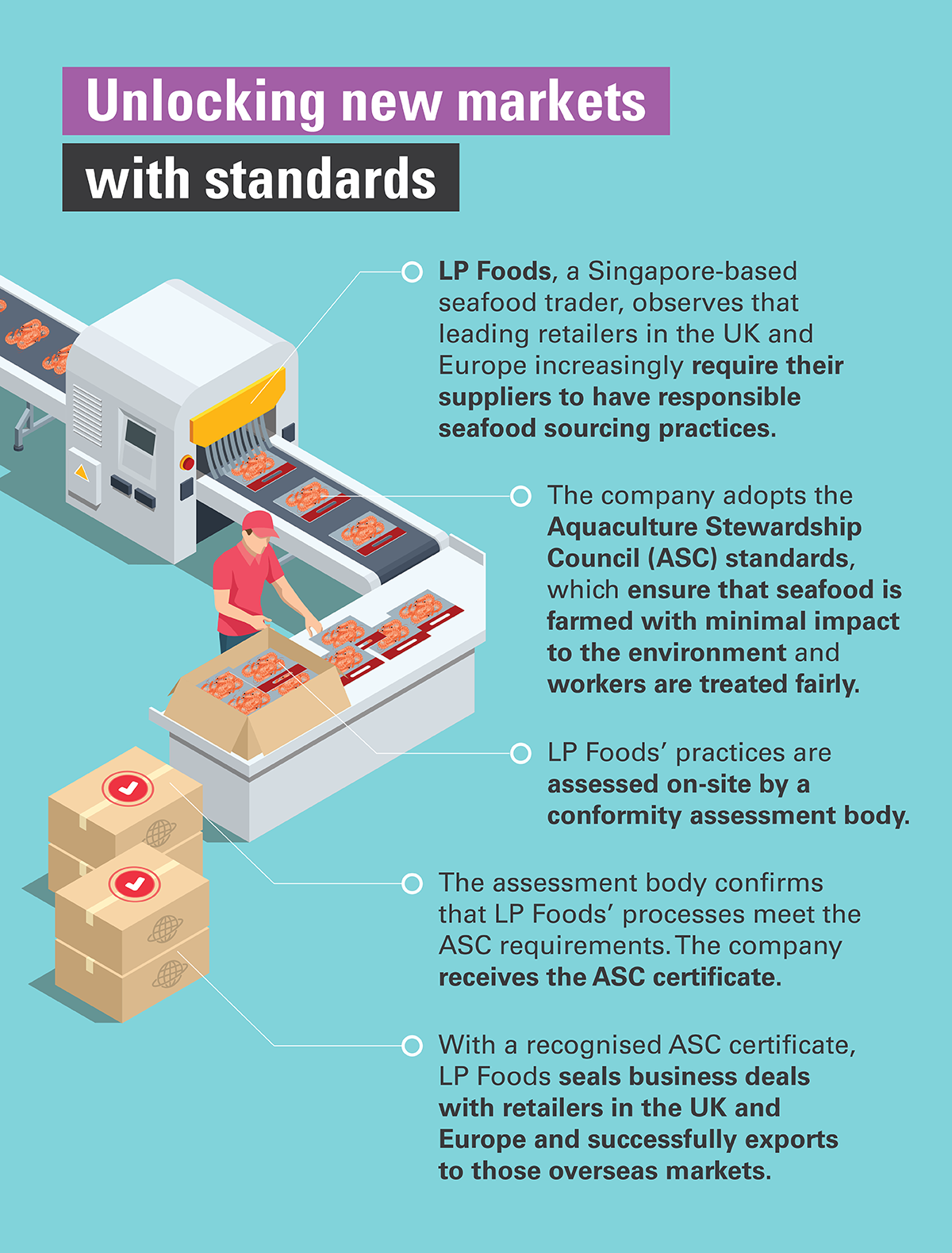
Like all tools, standards, when wielded correctly, can give your business an edge. The key? Being strategic about standards adoption, by approaching it with your business model and goals in mind.
Here’s how to turn standards into a valuable tool in your company’s arsenal.
With so many standards out there, how do I know which one is suitable for my company?
Start with your objective. For example, is your company looking to improve a system or process? Or have your buyers and customers implemented new requirements? When you have an end-goal and a timeline in mind, it is easier to make plans and gather resources to get there.
RMA Group provides business processes such as recruitment, payroll processing and digitisation. Fundamental to its business offering was the assurance of business continuity for its clients, as many MNCs and government agencies in Singapore rely on them for critical business processing.
So, in 2014, the company adopted SS ISO 22301 to implement a business continuity management plan. Doing so not only helped RMA improve its standard operating procedures, assuring existing clients; it also boosted the company’s reputation, helping it to clinch new contracts.
If your company is unsure, fret not. Consult one of the experienced business advisors at our SME Centres, who can work with you to understand your company’s needs and explore standards that can help you achieve your goals.

How do I start getting my company to adopt a standard?
Commitment is key. In fact, Gold Kili, a local coffee powder manufacturer and distributor that has adopted several standards, would advise you to be committed for the long run.
Mr Desmond Ng, Gold Kili’s managing director, says: “To get a company certified is not a one-time deal. Instead, it is about continuous compliance to the standard.”
So, first, get buy-in from your top management and employees by getting them to understand the benefits of adopting the standard.
Then, establish the resources your company will require. Be prepared to dedicate personnel, time, infrastructure and money to implement the standard. For example, if the firm is adopting SS ISO 22301, you will need to set up a business continuity planning team. You may also need to consider appointing a business continuity manager to ensure that employees are familiar with the business continuity plans.
What’s next after my company implements a standard?
Products and services still need to be tested and inspected by a conformity assessment body, to be certified.
For instance, if your company adopts a standard for a business process, you will need a conformity assessment body to assess the process on-site and confirm that the guidelines are implemented before the company is certified.
Here’s a pro tip: go for a conformity assessment body that is accredited, as accreditation means that the assessment body itself meets recognised standards. For a list of accredited organisations, approach the Singapore Accreditation Council.
If your company has been certified, don’t rest on your laurels just yet. Standards are constantly reviewed and may be updated to keep up with changes in the industry. This means your company may need to implement new measures to stay certified.

Will adopting standards add to my business costs?
In the process of adopting standards, some aspects will require the company to pay a fee – for example, when purchasing a standard, and getting conformity assessment bodies to certify the company.
But this is an investment that will pay dividends in the long run – as local printing and packaging company Teckwah Industrial Corporation found.
Using SS 540, a Singapore Standard for business continuity management (now replaced by SS ISO 22301), Teckwah not only strengthened its ability to avoid or mitigate impacts from disruptive incidents, but also gained customer confidence, enabling it to secure important contracts. These benefits generated some S$1.45 million, or a whopping 11% of profits, for Teckwah annually, according to a 2014 ISO study.
Raise your bar
Get a quick start by checking out our definitive guide to standards by industry. For more specific assistance, companies can also reach out to us at go.gov.sg/bx33cy.

